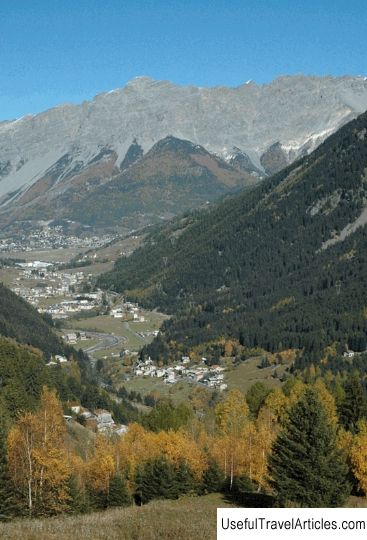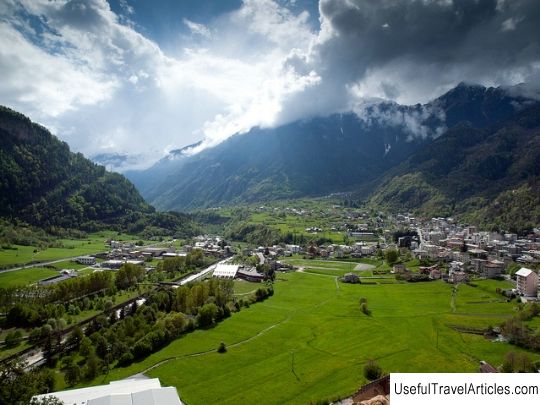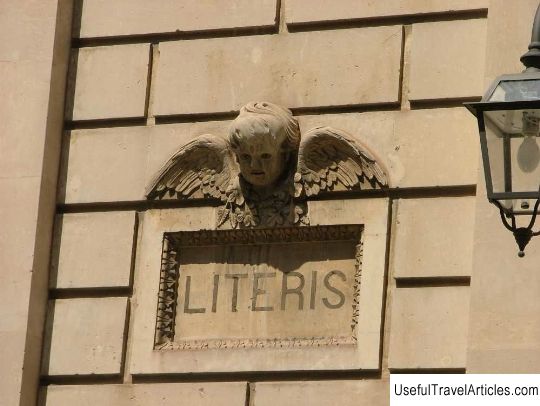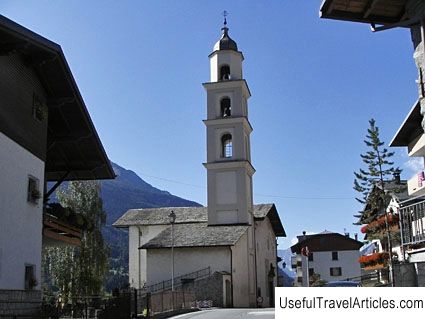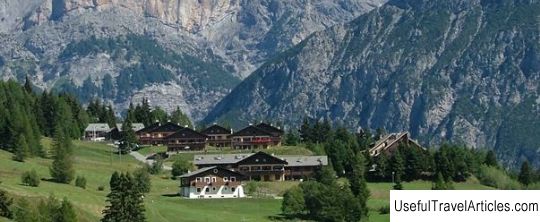Cepina description and photos - Italy: Alta Valtelina
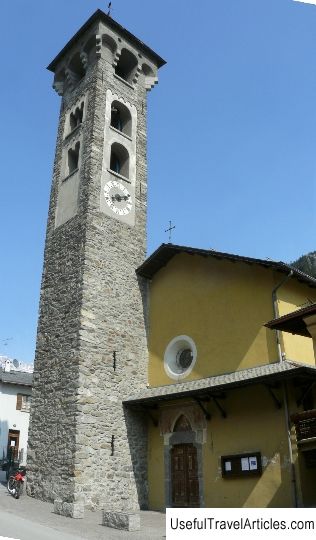
Cepina description and photos - Italy: Alta Valtelina. Detailed information about the attraction. Description, photographs and a map showing the nearest significant objects. The title in English is Cepina. Photo and descriptionChepina is the most populated village of the Valdisotto ski resort. It is located on the banks of the Adda River and on the side of a mountain next to other villages - Pedemonte, Pozzaglio, Valcepina. There are many modern hotels and apartments for tourists. Of the sights of Chepina, it is worth highlighting the crypt and the parish church of Santa Maria Assunta. The former is known for its highly elegant wrought iron fence dating from the 8th century and is one of the most outstanding works of art in the whole of Alta Valtellina. Carlo Colturi and Giacomo De Gasperi have traditionally been the authors of the fence, but recent archival finds made by the parish priest suggest that the masterpiece was authored by Giuseppe Pini, with Colturi and De Gasperi being his assistants. A fence with fine iron ornaments is located between round arches and faces four small stone columns made by sculptors Giacomo Schena and Filippo Brakchi. Other valuable works adorning the crypt are the frescoes on the facade, walls, and interior arches. They were executed in the 18th century by the master Ligari, Alessandro Valdani and Tommaso Billy. Inside the crypt is a 6th century marble ark and a bowl of holy water. The gargoyles hanging from the parapet are of particular interest - they were made after the fence and depict traditional motifs of dragons and fantastic creatures. The Parish Church of Santa Maria Assunta is located close to the 18th century cemetery and crypt. It was built in the 14th century, but has been rebuilt several times over the past centuries. The current building was erected in 1856. Above the main entrance is a late 15th-century fresco by Giovannino da Sondalo depicting Saints Gervasius and Protasius, with the Holy Trinity in the center on an arch. Another ancient fresco is located on the southern facade of the church - this is the Madonna and Child with the saints. In addition to the facade, there is a flight of stairs leading to a covered gallery. Fragments of frescoes from the 15th and 16th centuries have also been found on the walls of the church. A beautiful 5th century wooden altarpiece has survived. Also inside you can see a statue of the Madonna and Child and statues of saints, a nativity scene, another 6th-century wooden altarpiece, and 17th-century Marni paintings depicting saints and angels. Another ancient fresco is located on the southern facade of the church - this is the Madonna and Child with the saints. In addition to the facade, there is a flight of stairs leading to a covered gallery.Fragments of frescoes from the 15th and 16th centuries have also been found on the walls of the church. A beautiful 5th century wooden altarpiece has survived. Also inside you can see a statue of the Madonna and Child and statues of saints, a nativity scene, another 6th-century wooden altarpiece, and 17th-century Marni paintings depicting saints and angels. Another ancient fresco is located on the southern facade of the church - this is the Madonna and Child with the saints. In addition to the facade, there is a flight of stairs leading to a covered gallery.Fragments of frescoes from the 15th and 16th centuries have also been found on the walls of the church. A beautiful 5th century wooden altarpiece has survived. Also inside you can see a statue of the Madonna and Child and statues of saints, a nativity scene, another 6th-century wooden altarpiece, and 17th-century Marni paintings depicting saints and angels. Also inside you can see a statue of the Madonna and Child and statues of saints, a nativity scene, another 6th-century wooden altarpiece, and 17th-century Marni paintings depicting saints and angels. Also inside you can see a statue of the Madonna and Child and statues of saints, a nativity scene, another 6th-century wooden altarpiece, and 17th-century Marni paintings depicting saints and angels.      We also recommend reading Church of the Resurrection of Christ in Kadashi description and photos - Russia - Moscow: Moscow Topic: Cepina description and photos - Italy: Alta Valtelina. |
